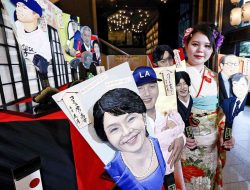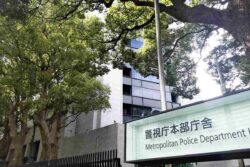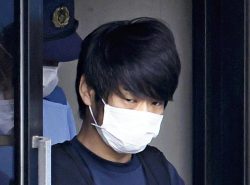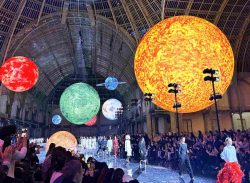Shibaigoya Spring: Kabuki Performances in Cozy Edo Period Playhouses Return After Pandemic Delays

11:30 JST, June 10, 2024
Shibaigoya, or quaint kabuki playhouses that carry on traditions from the Edo period (1603-1867), survived the coronavirus pandemic and are now experiencing restoration and revival.
In Kotohira, Kagawa Prefecture, colorful banners and cherry blossoms at peak bloom marked the “Shikoku Konpira Kabuki Grand Theatre” performance held for the first time in five years.
The Konpira Grand Theatre — commonly known as the Kanamaruza — is Japan’s oldest existing full-scale shibaigoya theater. In April, this national important cultural property hosted a performance featuring actors such as Matsumoto Koshiro X, Nakamura Jakuemon V and Nakamura Ganjiro IV.
Since 1985, a kabuki performance had been hosted every year at the Kanamaruza, becoming the theater’s spring tradition. However, the pandemic, as well as renovations, caused the performances to be cancelled from 2020 to 2023.
This year, however, people came from all over the country to see the performance. Kotohira Mayor Hideki Kataoka said, “It sounded to me as if the Kanamaruza was saying, ‘I’ve been waiting for this!’”
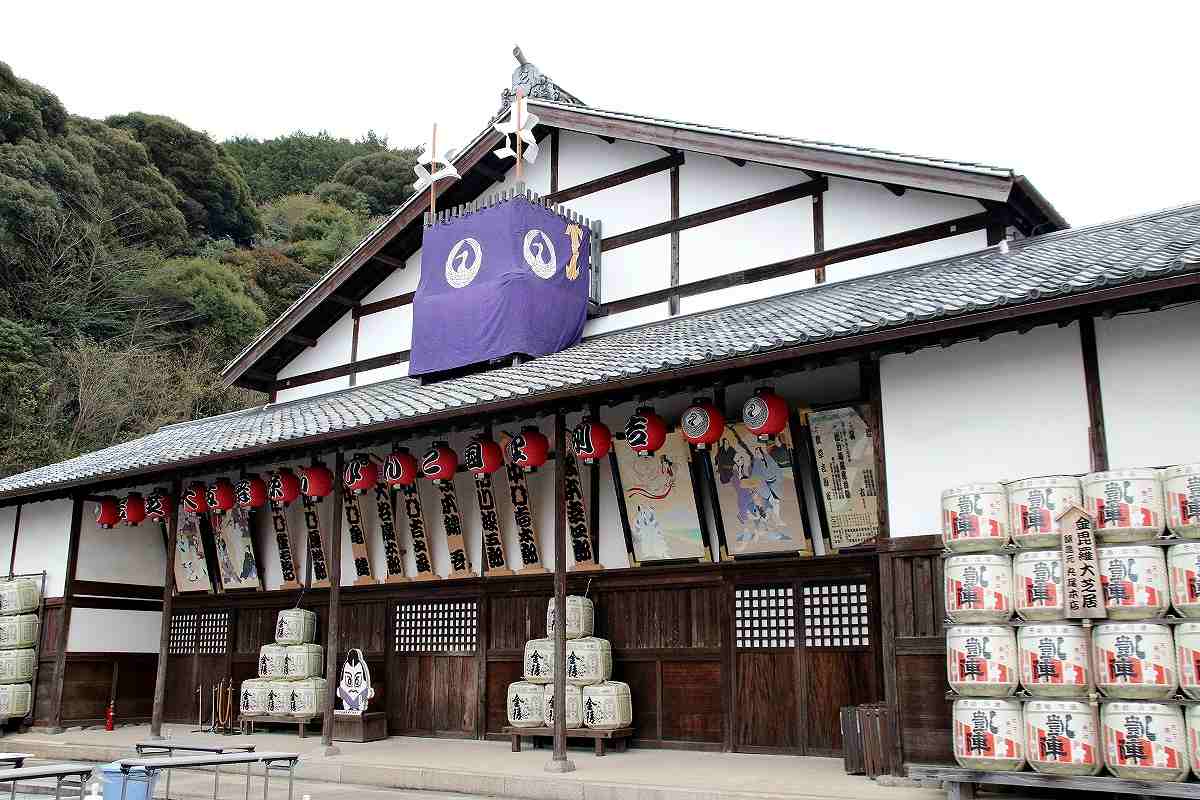
Signboards made to entice customers are seen at the Kanamaruza Theater.
Spectators bent down to get through the low entrance, called a “nezumi kido” — literally “rat door” — and sat down in the masuseki box seats. They wowed in admiration at the energy on stage, from a distance so close that it seemed as if they could reach out to the actors.
The Mino Kabuki Museum Aioiza in Mizunami, Gifu Prefecture, hosted a special performance by the Nakamuraya troupe on April 15 for the first time since 2017. The theater is one of the venues of the troupe’s tour.
Nakamura Kankuro VI was sick, and his younger brother Shichinosuke II performed the dance “Bukaku Gojobashi” that day. After playing the female role of Tokiwa Gozen, Shichinosuke appeared on the hanamichi passage as Benkei with a Japanese halberd in his hand, eliciting roars and cheers from the 380 spectators.
The audience tossed wrapped offerings of money, or ohineri, a traditional way to praise the actors’ performances, and the sense of togetherness unique to the cozy shibaigoya seems to have encouraged Shichinosuke to play the two roles flawlessly to the end.
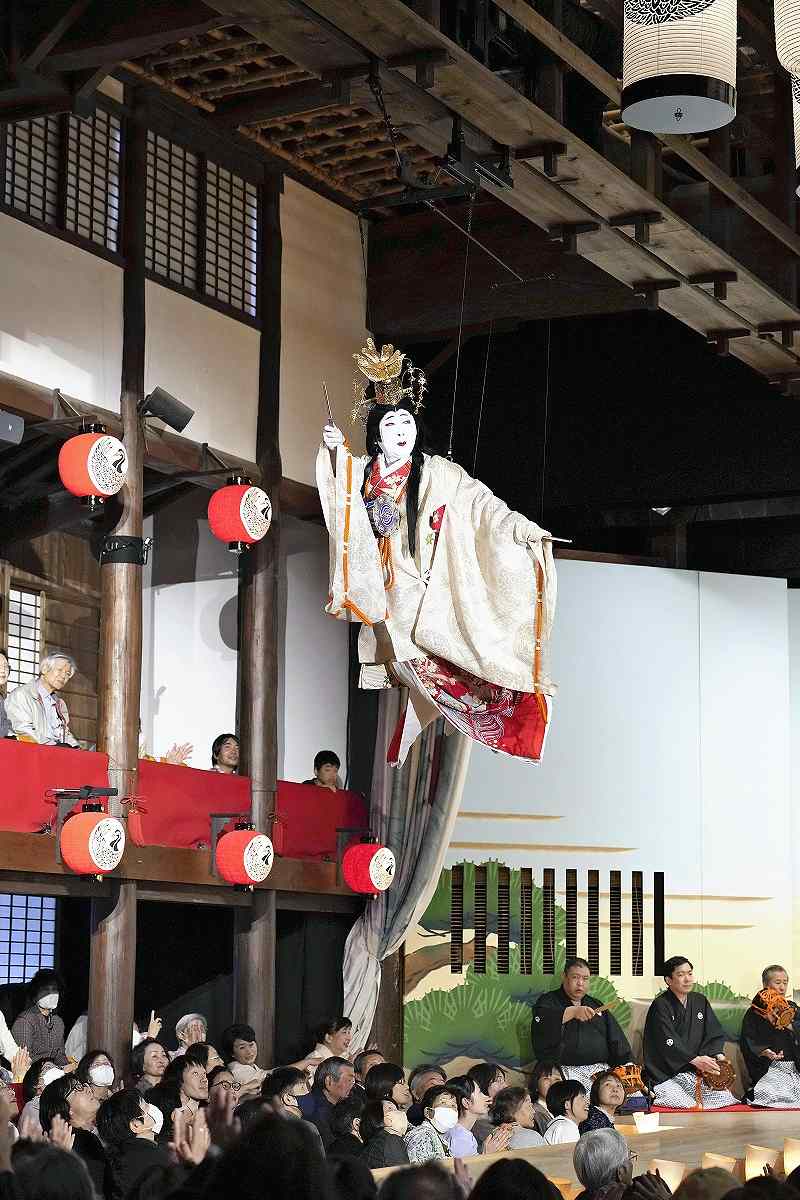
Nakamura Jakuemon V dances as he flies around on a rope while performing “Hagoromo.”
Preserving kabuki’s origins
Shibaigoya playhouses, built between the Edo period and the early Showa era (1926-1989), were demolished or closed one after another due to the diversification of entertainment options during the period of rapid economic growth in the 1960s and 1970s. Since then, they have been reevaluated as a cultural asset, and are being restored and reopened.
About 15 playhouses have their names registered with the national shibaigoya council established by groups involved in the preservation and use of shibaigoya. They actively host performances but also struggle with maintenance and management.
The Kanamaruza, for example, was built in 1835 and restored to its original appearance in 1976. It was reinforced against earthquakes in 2003, and its walls and ceiling were strengthened from 2020 to 2022. Half of the cost of the ¥225 million project was shouldered by the national government, but it is still not a light burden for a town with a population of 8,000 to cover the remaining amount.
“We have a mission that can only be accomplished here, where a playhouse from the Edo period still remains,” Kataoka said.
Seats with backrests were installed for the latest performance, but some elderly people found it difficult to move up the stairs or remain seated for long periods. Tomoyoshi Urabe, a professor at Nihon University’s College of Engineering and an expert in stage architecture, said: “The density of the seating and the use of natural light in a playhouse are attractive features. It would be nice to utilize them in accordance with the times while respecting their original appearance.”
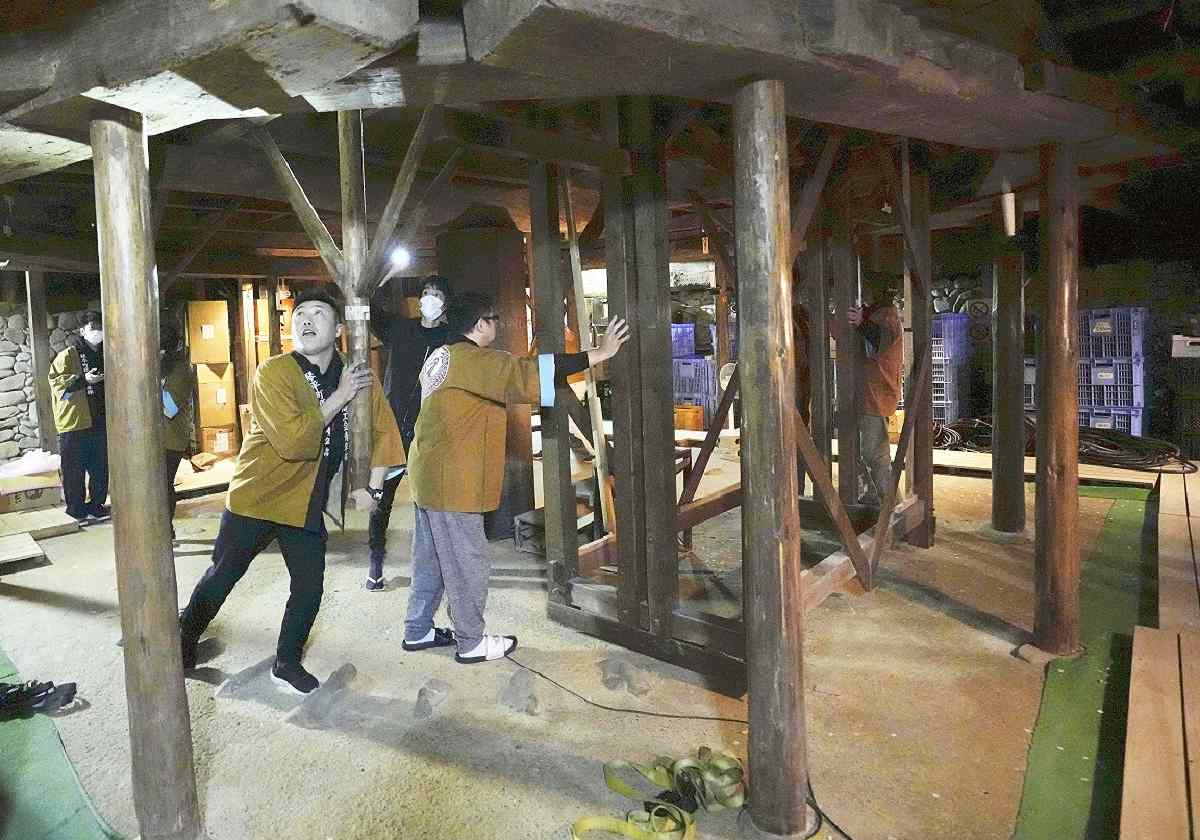
The revolving stage of the Kanamaruza Theater is moved by the youth club of the local chamber of commerce and industry.
The Aioiza is the center of local kabuki performances. Mino kabuki performances, which have had their roots in the area since the Edo period, are presented every autumn by participants from children to the elderly. Children also perform joruri puppet shows and dances.
The theater is privately operated and when the roof was damaged, it sent out letters to supporters nationwide and raised ¥5 million for repairs. The theater also manages costumes and produces its own props.
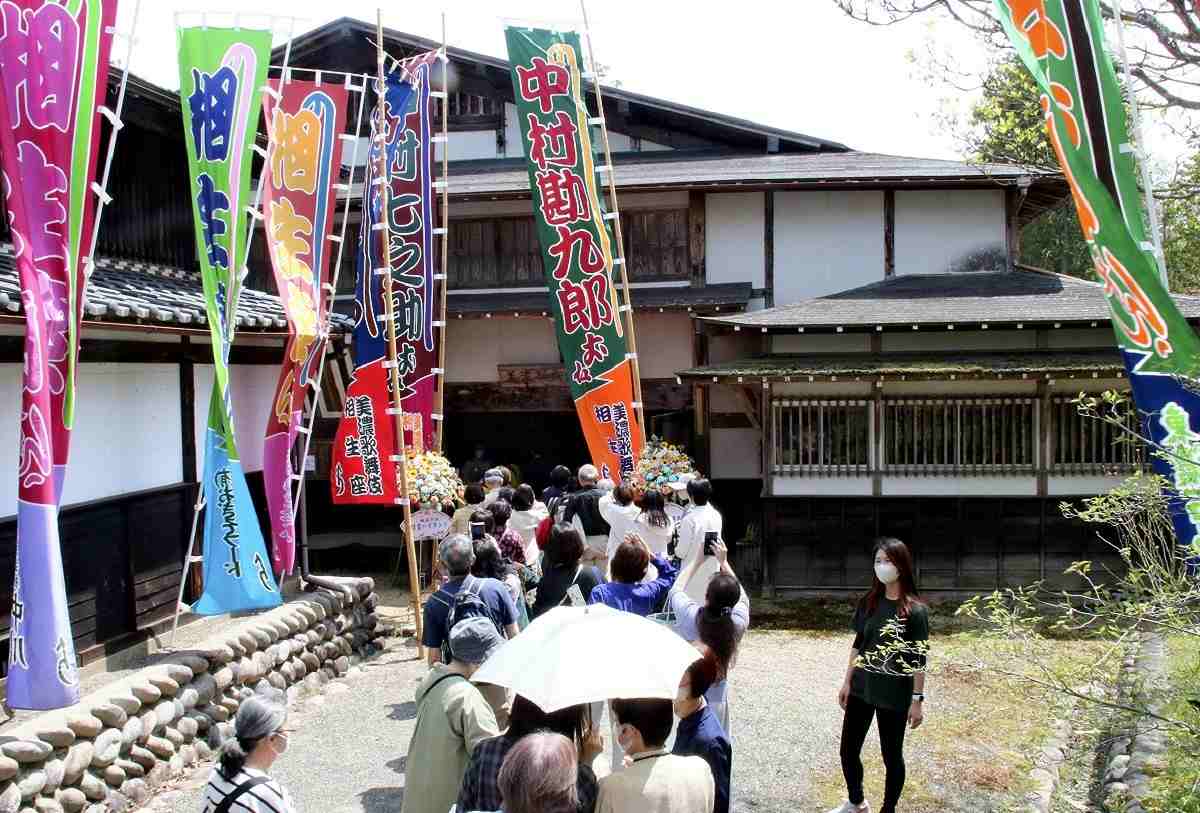
Banners flutter at the Aioiza Theater.
“Kabuki is a collection of various arts, including music, costumes and wigs,” said theater director Sachie Oguri, 76. “I want to solidify the foundation of kabuki and preserve its origins.”
"Culture" POPULAR ARTICLE
-

Dior, Gucci Adapt Kyoto’s Traditional Textiles for Modern Tastes
-

Event Held at Kyoto State Guest House to Showcase Beauty of Traditional Japan, Includes Crafts, Cuisine, Performances
-

Van Cleef & Arpels Dazzles with Art Deco Artisanry at Tokyo Exhibit
-
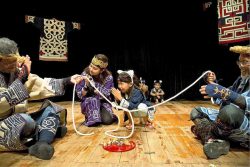
Ainu Thanksgiving Festival to Be Held in Tokyo with Performances from Ainu, Other Indigenous Groups
-

Disney’s ‘Twisted-Wonderland’ Animated Series Puts Villains in Spotlight: New Show Features School Inspired by Classic Disney Films
JN ACCESS RANKING
-

Govt Plans to Urge Municipalities to Help Residents Cope with Rising Prices
-

Japan Resumes Scallop Exports to China
-

Japan Prime Minister Takaichi Vows to Have Country Exit Deflation, Closely Monitor Economic Indicators
-

Japan to Charge Foreigners More for Residence Permits, Looking to Align with Western Countries
-

JR East Suica’s Penguin to Retire at End of FY2026; Baton to be Passed to New Character





